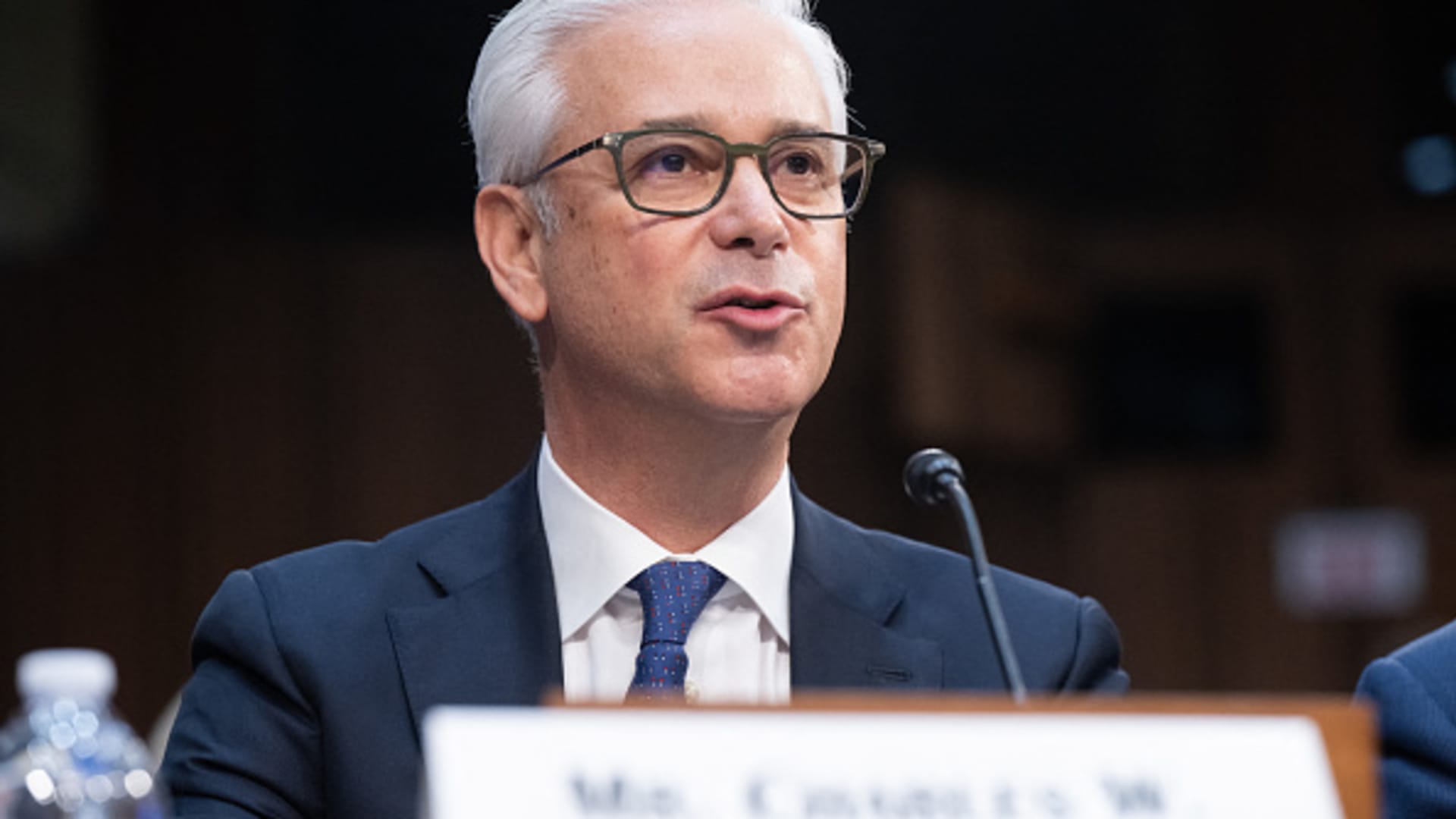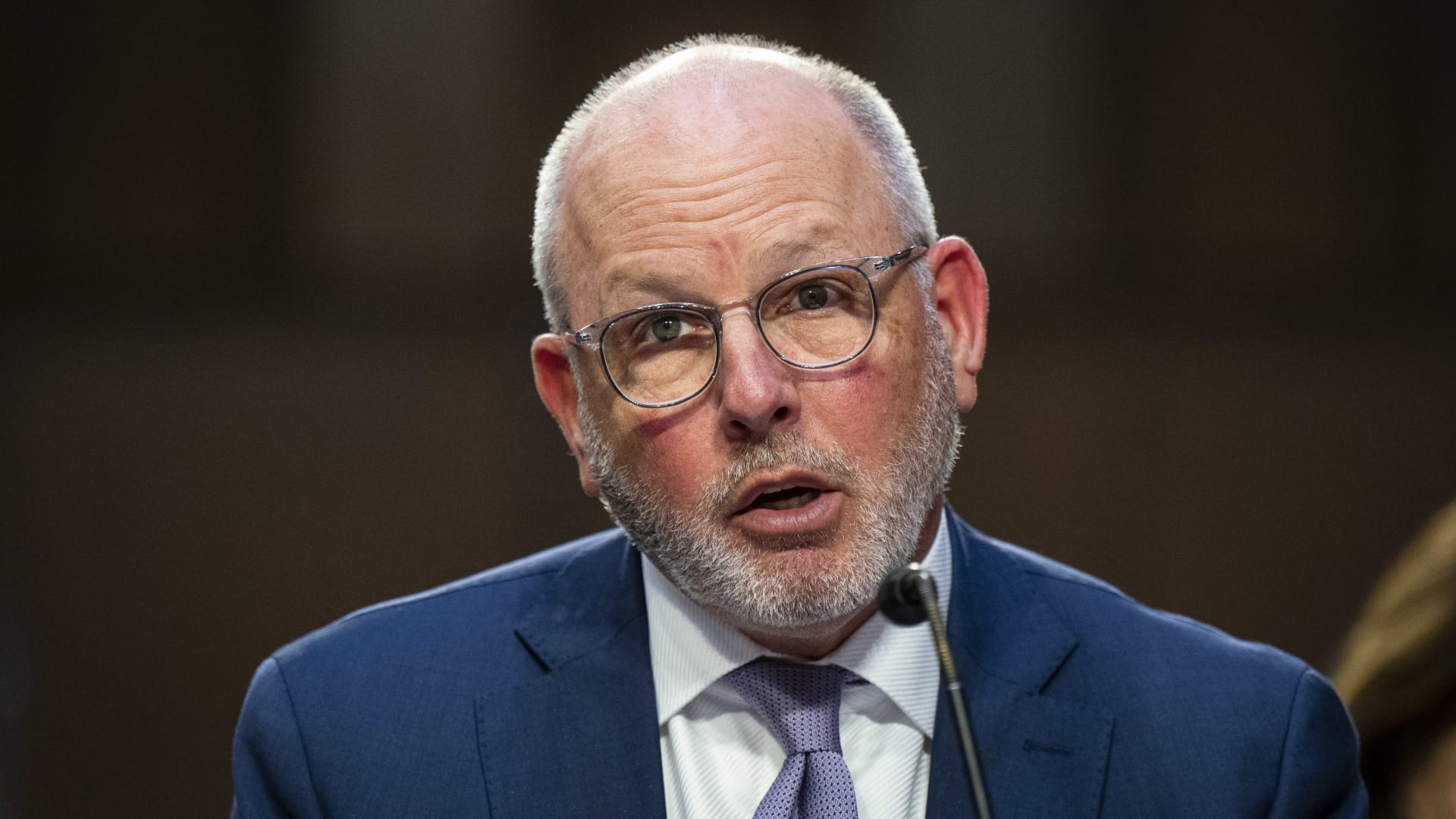Biotechnology researchers.
Janiecbros | E+ | Getty images
A version of this article appeared for the first time in the Healthy Bulletin returns from CNBC, which brings the latest medical care news directly to its entrance tray. Subscribe here To receive future editions.
The Trump Administration is trying to implement the main fund cuts for the National Health Institutes that would limit the payments of medical and public health research to universities, medical centers and other beneficiaries of subsidies.
The measure would save the federal government more than $ 4 billion a year, according to NIH, the world's largest public biomedical research.
But hospitals, universities and other members of the research community have criticized the effort, saying that it would harm US patients who would benefit from medical discoveries that save life related to cancer, diabetes and other chronic and devastating diseases.
The policy is aimed at funds for the so -called “indirect” facilities and administrative costs, which are still essential to conduct research. These include costs related to operational and maintenance faculties, such as electricity, water and heating, and financial, technological, legal and back-effect compliance support.
Trump first announced the policy change on Friday and entered into force on Monday morning.
But a federal judge temporarily blocked the implementation of the cuts on Monday afternoon after the general prosecutors of 22 states filed a lawsuit against the Trump administration. That same judge extended that pause to the rest of the country later on Monday in response to a lawsuit filed by associations that represent teaching hospitals, public health and pharmacy schools and hospitals in the Boston and New York area.
The two restriction orders issued by the judge, who was nominated by President Joe Biden in 2021, stops politics throughout the country waiting for more arguments of the administration and states of Trump. An audience is scheduled for February 21 for both cases.
Robert F. Kennedy Jr., Trump's choice to lead the largest federal agency that supervises NIH, can undo the fund cuts, according to a statement from
Senan Susan Collins, Republican of Maine. Collins said he called Kennedy on Monday to express his strong opposition to effort.
The Senate is expected to vote before Thursday if it confirms Kennedy after his nomination cleared the Senate Finance Committee last week.
This is what you should know about fund cuts.
The NIH said in a memorandum that would limit the amount of funds for “indirect costs” to 15%, which are not directly linked to the objectives of a scientific project. Direct costs include scientists' salaries, together with laboratory teams and supplies necessary to complete a project.
The average that NIH pays in indirect costs is around 27% to 28%, but some of the nation's most elite research universities receive 50% or more, the agency said. For example, Harvard, Yale and Johns Hopkins each receive over 60%, said NIH.
“The United States should have the best medical research in the world,” said NIH in the memo. “Consequently, it is vital to ensure that as many funds as possible are destined for direct scientific research costs instead of administrative general expenses.”
In an X publication, the NIH said that $ 9 billion of the $ 35 billion that the agency spent in investigation subsidies during fiscal year 2023 went to indirect costs.
But the lawsuit filed by the States and supported by the University Presidents claimed that reducing the financing of indirect costs “would give rise to dismissals, suspension of clinical trials, interruption of ongoing research programs and laboratory closures.”
“NIH's extraordinary attempt to interrupt all existing and future subsidies not only raises an immediate threat to the Nation's research infrastructure, but will also have a lasting impact on their research capabilities and its ability to provide advances that save the life in scientific research. ” He said the suit.
Katherine Newman, Provost of the System of the University of California and Executive Vice President of Academic Affairs, said that the fund cuts “would interrupt a critical relationship with the pharmaceutical partners and the device industry that trust our independent research and clinical trials to establish The effectiveness of emerging treatments. ” The Times reported.
The 10 Campus UC system in California is a world leader for influential investigation, with more than 27,000 research staff. Newman said that indirect money pays for “personnel who ensures the safety of adults and children who enroll in clinical trials” and ethics teams that work in trials.
We will continue monitoring the fate of fund cuts, so they are attentive to our coverage.
Do not hesitate to send any advice, suggestion, stories ideas and data to Annika in [email protected].
The latest in medical care technology: Americans are fighting with the increase in costs and high anxiety around reproductive care, according to the report
More than two years have passed since the United States Supreme Court revoked Roe v. Wade and the constitutional right to abortion ended. But after the victory of President Trump in November, Americans feel more uncomfortable about access to reproductive health care That never before.
According to Maven Clinic, a digital medical care startup that aims to support patients throughout their reproductive life cycle. Maven published his annual report of “health and health benefits” of the State “, which discovered that almost half of the respondents are more concerned with their reproductive health than in past years.
The CEO of Maven, Kate Ryder, said that the company has never seen the levels of anxiety as high as in the last report.
“Because there have been so much legislation and a mosaic of laws that dictate access to attention, there is more confusion than we have seen and more anxiety when people begin that family construction trip,” Ryder told CNBC in an interview in an interview .
The increase in costs does not help things.
Maven hires with health plans and employers, and 70% of the employers that the company said said that the cost of fertility care has increased in the last three years. The cost of in vitro fertilization medications has only increased by 84% since 2014, which drastically exceeds the 37% increase in list prices in all prescription medications, according to a GOODRX September report.
More than 90% of the employers surveyed said they are “concerned with the increase in the cost of fertility care,” said Maven's report.
“The cost is in charge and center this year, while a few years ago, it simply was not,” said Ryder.
But in the light of anxiety and the growing costs of attention, more employers are thinking about reproductive benefits as a way of retaining talent, said Maven. About 85% of employers said they recognize these benefits as “critics for retention”, and almost 70% said they plan to increase the number of suppliers they use in the next two or three years.
This includes more attention and support for men, since 65% of the employers surveyed said they are increasing their coverage of the advisory and well -being services of reproductive health for men.
Almost 70% of the employees surveyed said they have “taken, considered or could take a new job” if they offered better family and reproductive benefits, according to the report.
Maven surveyed 3,752 full -time employees and 1,569 human resources leaders in the United States, the United Kingdom and India to make its report.
Read the full report here.
Do not hesitate to send any advice, suggestion, stories ideas and data to Ashley at [email protected].












